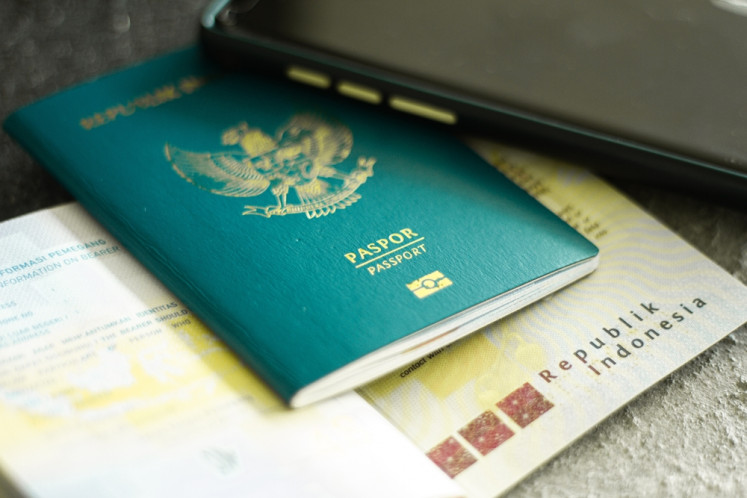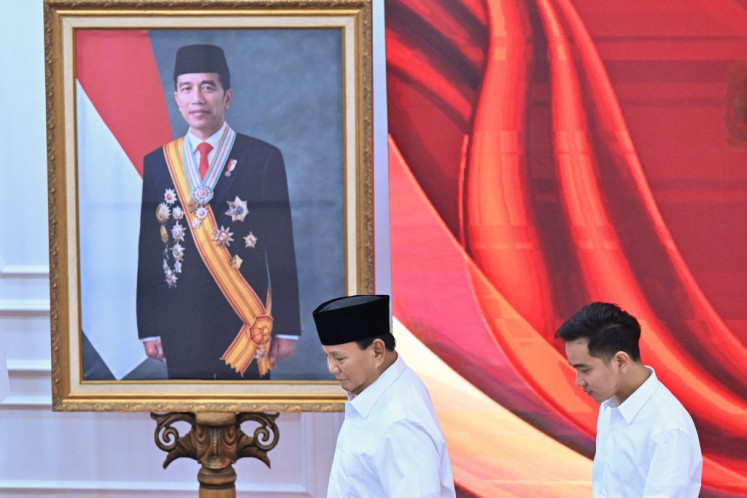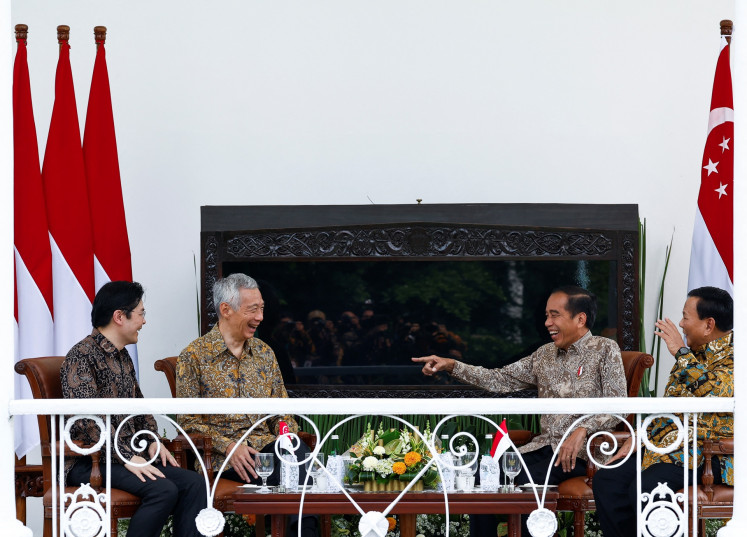Soaring PLN net profits driven by ‘external factors’
State-owned electricity firm PLN unexpectedly overcame their gloomy financial performance in the third quarter of 2018 to close the year with a Rp 11
Change Size

S
span>State-owned electricity firm PLN unexpectedly overcame their gloomy financial performance in the third quarter of 2018 to close the year with a Rp 11.57 trillion (US$803 million) net profit, an amount 161.4 percent higher than the previous period’s.
Previously, PLN announced $1.22 billion in losses as of the third quarter of 2018 because of an increase in operating expenses, as well as fuel and lubricant costs.
According to the firm’s 2018 annual financial report published in the Indonesia Stock Exchange (IDX) on Wednesday, the biggest contribution to the 2018 full-year profit was from “other net incomes” that in total were worth Rp 15.6 trillion, 359.46 percent higher than in the previous period.
The “other net incomes” were mainly from “receivables from the government” that rose to Rp 7.45 trillion after none were recorded in 2017.
“On June 28, 2018, the government approved the compensation for the cost of electricity supplies [BPP] to several categories of customers whose electricity sales rates were set lower than the BPP,” the report stated.
The “adjustment of fuel and lubricant prices” contributed second to the firm’s other income in 2018, at Rp 4.04 trillion, a 487.5 percent jump from the previous period when it was Rp 688.33 billion.
Another high amount, Rp 23.17 trillion, of receivables in 2018 was also found in the current assets post under the name “compensation receivables”, while no compensation was found in 2017.
The report said the compensation money from the government was different than a regular government subsidy.
A statement from PLN’s newly appointed strategic procurement director, Djoko Abumanan, last month was in line with the findings in the financial report, saying that some of the receivables were from a state sub-holding company, Perusahaan Gas Negara (PGN).
“PGN had owed us some money, which they have acknowledged and are to pay in installments, that reached Rp 6 trillion,” he said after attending the firm’s annual general shareholders meeting. “It was overpayment from us to PGN.
Djoko said that the meeting agreed to not pay any dividends from 2018’s net profit to fuel their investment activities this year, which will need Rp 99 trillion.”
Separately, when asked for confirmation about its debt to PLN, PGN president director Gigih Prakoso said only that there was an ongoing discussion with PLN on an adjustment of their gas sales contracts.
“We are discussing the contract for gas sales with PLN under new terms,” he said. “Actually, we have started to implement the new terms this year and it’s not retroactive.”
PLN’s total amount of receivables last year, more than Rp 30 trillion, covered the increase in the firm’s operating losses before subsidies: Rp 35 trillion, which was 74.8 percent higher than in the previous period.
The loss on foreign exchange in 2018 also increased to Rp 10.9 trillion, 272.2 percent higher than in the corresponding period when it was Rp 2.93 trillion.
However, PLN finance director Sarwono Sudarto said he had a different thought about what was boosting 2018’s rising net profit.
He said on Wednesday the cap on coal prices, which was set at $70 dollar per ton, had a major contribution to last year’s profit.
He also argued that the bottom line reflected PLN’s good performance. “One was that our [electricity sales] grew quite high, our efficiency measures also ran well and then the biggest contribution was from the domestic market obligation [DMO] policy,” he said.
The DMO is a policy for coal contractors in Indonesia to supply at least 25 percent of their production for domestic purposes, especially in the electricity sector. However, since last year the government added a price cap, which is to end in December 2019, for the coal at $70 per ton.
Fabby Tumiwa, the executive director from a local energy watchdog, the Institute for Essential Services Reform, told to The Jakarta Post that the price cap is not enough, saying that the firm has to step up its effort to increase the nation’s demand for electricity.
“The challenge for PLN in the future is to maintain the growth of electricity demand so their revenue can be healthier and it can cover the gradually increased cost of energy,” he said.
He said that the coal price cap, which was able to reduce PLN’s cost of energy to between 15 and 20 percent, and the declining oil prices in the second half of 2018 helped to control PLN’s cost of producing electricity.
“So [in other words] PLN’s financial performance is still predominantly affected by external policies or factors. Hence, to achieve sustainable financial performance, PLN must be able to jack up the country’s electricity demand,” he said.
During the RUPST, the shareholders also agreed to name PLN’s newly appointed strategic procurement official, Djoko Abumanan, as the temporary president director following the resignation of the latest PLN boss Sofyan Basir over a corruption case.
Basir was named a suspect by the Corruption Eradication Commission at the end of April in a case pertaining to a $900 million mine-mouth coal-fired power plant, the Riau-1.









